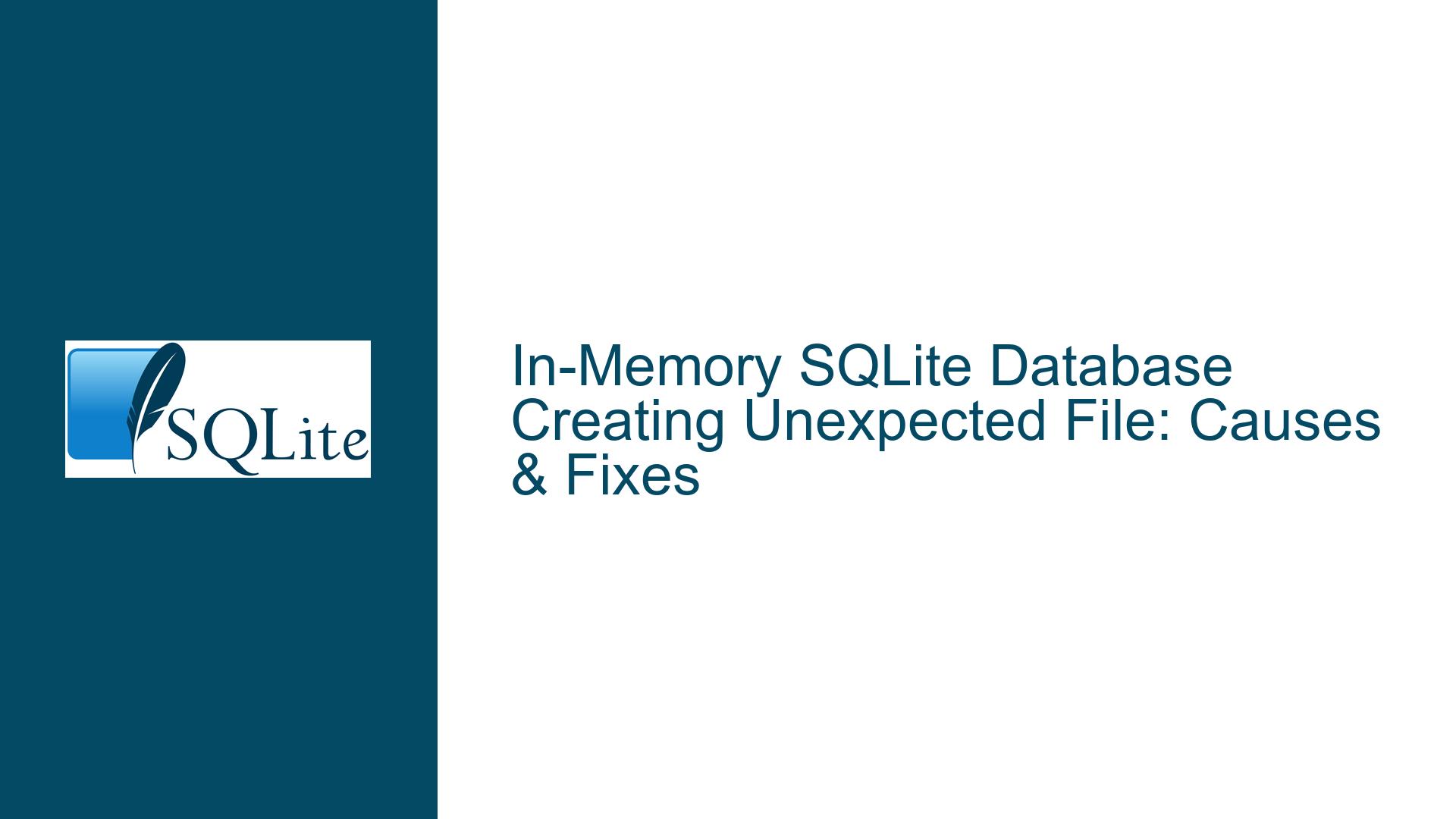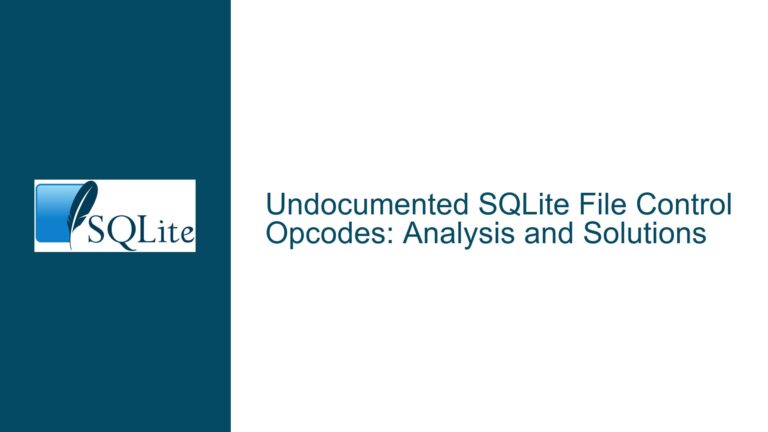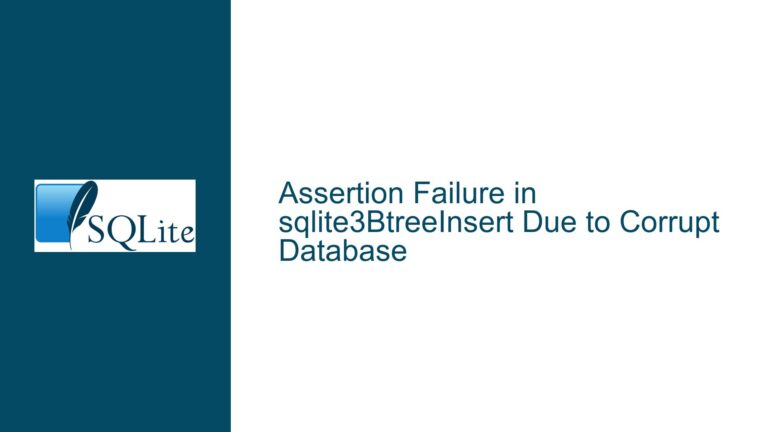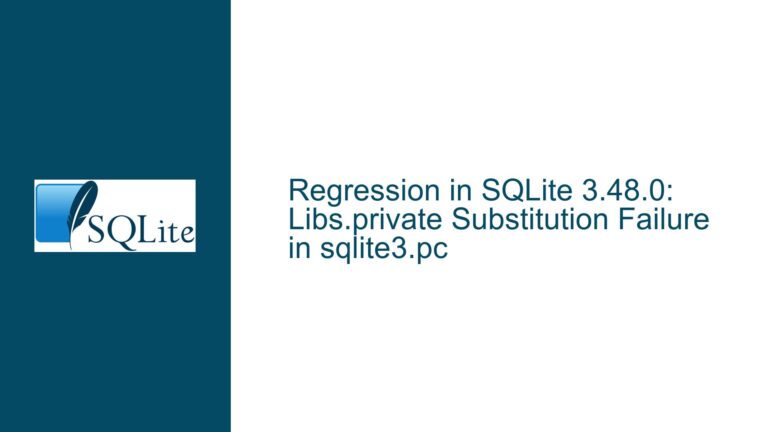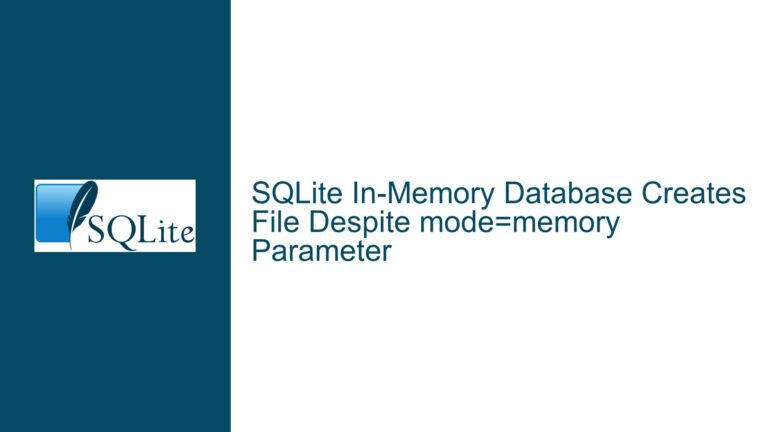In-Memory SQLite Database Creating Unexpected File: Causes & Fixes
Understanding In-Memory Database File Creation Behavior
The expectation when working with SQLite in-memory databases is that no persistent files will be written to disk. However, under specific configurations or implementation oversights, SQLite may inadvertently create physical files despite using syntax intended for purely memory-resident databases. This behavior stems from subtleties in URI handling, compilation flags, and parameter parsing. Below, we explore the root causes, diagnostic methodologies, and concrete solutions to resolve unintended file creation.
Core Mechanism of In-Memory Databases and URI Configuration
SQLite supports two primary forms of in-memory databases:
- Ephemeral Databases: Created using the special filename
":memory:". These exist only for the duration of a single database connection and leave no persistent artifacts. - Named In-Memory Databases with Shared Cache: Created via URI parameters like
file:memdb1?mode=memory&cache=shared. These allow multiple connections to share the same in-memory database but require explicit configuration of URI handling.
The critical distinction lies in URI filename recognition. When SQLite is compiled without URI support (the default for backward compatibility), it interprets file:memdb1... as a literal filename starting with file:memdb1, creating a disk file. This directly contradicts the intended behavior of using a named in-memory database.
Key Parameters Influencing This Behavior:
mode=memory: Instructs SQLite to treat the database as transient.cache=shared: Enables multiple connections to share the same in-memory instance.- URI Prefix (
file:): Triggers URI parsing logic only if the SQLITE_USE_URI compile-time flag is enabled.
Primary Causes of Unintended File Creation in In-Memory Workflows
1. Missing or Incorrect URI Filename Handling Configuration
SQLite versions prior to 3.7.13 (2012-06-11) do not support URI filenames by default. Even in newer versions, URI handling must be explicitly enabled using the SQLITE_USE_URI compile-time flag. If this flag is omitted during compilation, SQLite treats file:memdb1?mode=memory... as a literal filename, creating a file named file:memdb1 (with URL-encoded characters treated as part of the filename).
2. Ambiguity in Database Connection String Syntax
The absence of a double-slash (//) after the file: scheme can cause misinterpretation. For example, file:memdb1 (no authority component) is technically a valid URI but may not trigger in-memory mode unless parameters like mode=memory are correctly appended. Misplaced or missing parameters lead SQLite to default to persistent storage.
3. Shared Cache Collisions and Legacy Naming
When using cache=shared, SQLite requires a unique name for the shared memory region. If the same name is reused across processes or threads without proper coordination, SQLite may fall back to creating temporary files to manage locks or cache synchronization. This is rare but observable in highly concurrent environments.
4. Filesystem Artifacts from Journaling or Temporary Backups
Even for in-memory databases, SQLite may create transient journal files during transactions if journaling modes like DELETE (default) are active. These files are typically deleted automatically but may persist if the application crashes or does not cleanly close the database connection.
Systematic Diagnosis and Resolution Strategies
Step 1: Verify SQLITE_USE_URI Compilation Flag Status
Diagnosis:
Confirm whether the SQLite library was compiled with URI support. Execute the following in the SQLite shell:
SELECT sqlite_compileoption_used('SQLITE_USE_URI');
A return value of 1 indicates URI support is enabled. If 0 or NULL, URI handling is inactive.
Resolution:
Recompile SQLite with URI support. For amalgamation builds, define the flag during compilation:
gcc -DSQLITE_USE_URI=1 sqlite3.c -o sqlite3
For projects using autoconf or CMake, ensure the build configuration includes this flag.
Step 2: Validate URI Syntax and Parameter Placement
Diagnosis:
Incorrect URI formatting can bypass in-memory mode. The canonical form for named in-memory databases is:
file:<identifier>?mode=memory&cache=shared
Test with minimal parameters first:
sqlite3_open("file::memory:?cache=shared", &db);
If no file is created, the issue lies in parameter ordering or syntax.
Resolution:
- Use double-slash (
//) to enforce URI authority parsing:
file:///memdb1?mode=memory&cache=shared - URL-encode special characters if present in the database name.
Step 3: Disable Persistent Journaling Modes
Diagnosis:
Journal files (e.g., -journal, -wal) may appear even for in-memory databases. Check the journal mode:
PRAGMA journal_mode;
Resolution:
Set journal mode to MEMORY or OFF during database initialization:
sqlite3_exec(db, "PRAGMA journal_mode=MEMORY;", 0, 0, 0);
This prevents filesystem interactions for transaction logs.
Step 4: Audit File Descriptor Leaks and Connection Closure
Diagnosis:
Incomplete cleanup of database connections can leave temporary files. Use OS-specific tools (lsof on Unix, Process Monitor on Windows) to track open file handles during application execution.
Resolution:
Ensure all database connections are closed with sqlite3_close_v2() and that all prepared statements are finalized. Implement error handlers to catch exceptions that might bypass cleanup code.
Step 5: Test with Canonical In-Memory Identifiers
Diagnosis:
Compare behavior between ":memory:" and URI-based in-memory databases. If ":memory:" works without file creation but the URI approach does, the problem is isolated to URI parsing.
Resolution:
If URI handling is not mandatory, use ":memory:" for simplicity. For shared cache requirements, ensure URI support is active and parameters are correctly ordered.
Step 6: Inspect Filesystem Permissions and Working Directory
Diagnosis:
SQLite may attempt to create files in the current working directory if it lacks write permissions to standard temporary directories. Check environment variables like TMPDIR and filesystem permissions.
Resolution:
Explicitly set the temporary directory using PRAGMA temp_store_directory (deprecated but functional) or configure the application’s environment to use a writable location.
Supplemental Best Practices for In-Memory Workloads
- Isolate Shared Cache Names: Use UUIDs or process-specific identifiers for shared in-memory databases to prevent cross-application collisions.
- Prefer
sqlite3_close_v2(): This variant ensures all resources are reclaimed, reducing the risk of leftover temporary files. - Monitor Filesystem Activity: Tools like
inotifywait(Linux) orfs_usage(macOS) can log real-time file creation events during testing. - Leverage
temp_storePRAGMA: SettingPRAGMA temp_store=MEMORY;forces temporary objects to reside in RAM, minimizing disk I/O.
By methodically addressing compilation settings, URI syntax, and environmental factors, developers can eliminate unintended file creation while retaining the performance benefits of in-memory SQLite databases.
